How to Choose the Perfect Non-Slip Bathroom Carpet
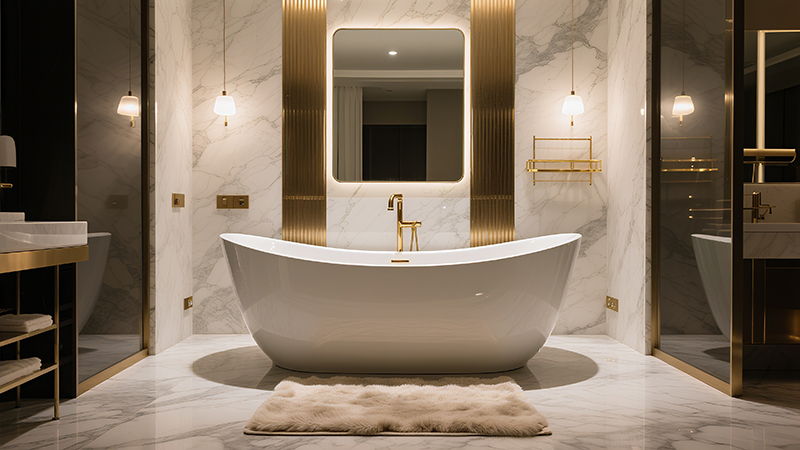
Contents
- 1. Why Material Quality is Non-Negotiable
- 2. The Backing: Your Carpet’s Hidden Hero
- 3. Sizing: Avoid the “Too Small” or “Too Cluttered” Trap
- 4. Easy Maintenance: Keep It Clean Without the Hassle
- 5. Pile Height: Balance Comfort and Hygiene
- 6. Water Resistance: Beyond the Basics
- 7. Testing the Grip: Don’t Trust the Label Alone
- 8. Style: Safety Doesn’t Have to Be Bland
- 9. Reviews: Learn from Real-World Users
- 10. Budgeting: Get the Most for Your Money
- Conclusion: Safety, Style, and Simplicity
Bathrooms rank among the most accident-prone areas in any home, with slips and falls contributing to over 200,000 emergency room visits each year in the United States, as reported by the Centers for Disease Control and Prevention (CDC). Young children under 5, older adults over 65, and even pets face the highest risks, since wet tile and vinyl floors can reduce friction to perilous levels—often lower than the traction available on ice. A high-quality non-slip bathroom carpet isn’t merely a decorative accessory; it’s a vital safety solution that merges functionality with aesthetic appeal. Yet, with a vast array of options saturating the market—from economical polyester mats to upscale bamboo blends—selecting the right one can be overwhelming. This guide elaborates on all the essential information you need to make a well-informed decision, covering everything from material science to maintenance tips, ensuring your bathroom remains safe, hygienic, and visually pleasing.
1. Why Material Quality is Non-Negotiable
The material of your bathroom carpet has a direct influence on its performance, longevity, and safety. It forms the basis of how effectively the rug absorbs moisture, resists mold growth, and feels beneath your feet. Let’s explore the most prevalent options, along with their advantages, disadvantages, and ideal applications:
| Material | Key Benefits | Potential Drawbacks | Best For |
| Microfibre | Exceptionally absorbent (capable of holding up to 7 times its weight in water), dries within 1–2 hours, soft underfoot, and efficiently traps dust and hair | May fade with frequent hot washes; can develop pills after 6–8 months of heavy use | Bathrooms with high humidity (e.g., family homes with daily showers), households with children |
| Cotton | Natural, breathable, hypoallergenic (ideal for sensitive skin), and biodegradable at the end of its lifespan | Takes 6–8 hours to dry; prone to shrinking (up to 5% after the first wash); susceptible to mold if not completely dried | Bathrooms with low moisture levels (e.g., guest bathrooms used once a week), eco-conscious users who prioritize natural materials |
| Bamboo | Antimicrobial (naturally contains bamboo-kun, a compound that repels bacteria), environmentally friendly (bamboo grows 3 feet per day without the need for pesticides), and dries quickly | Less soft to the touch; can feel rough on bare skin; comes with a higher price tag (20–30% more expensive than microfibre) | Eco-conscious shoppers, pet owners (resists pet odors), households with allergy sufferers |
| Polyester | Water-resistant, budget-friendly (30–50% cheaper than microfibre), and fade-resistant (retains color even after 50+ washes) | Less absorbent (soaks up 30% less water than microfibre); traps odors if left wet for more than 12 hours | Rental properties, high-traffic bathrooms (e.g., shared apartments), buyers on a tight budget |
Microfibre stands out for most households due to its optimal balance of absorbency and quick-drying characteristics. Its synthetic fibers (typically 0.5–5 micrometers in diameter, thinner than a human hair) create a large surface area for water absorption, making it perfect for busy family bathrooms. Bamboo, although more costly, is a sustainable option with inherent mold resistance—ideal for environmentally conscious consumers in Europe and North America who prioritize green living. Cotton, while gentle on the skin, demands more maintenance (such as line-drying in sunlight to prevent mildew), making it better suited for bathrooms with low daily usage.
2. The Backing: Your Carpet’s Hidden Hero
The backing is what elevates a regular rug to a non-slip essential. It may not be visible, but its quality determines whether your carpet stays securely in place or becomes a potential hazard. A subpar backing can turn a “non-slip” rug into a tripping risk, so selecting the appropriate one is crucial:
- Rubber Backing: The gold standard for grip. Natural rubber (derived from rubber trees) provides unparalleled traction on tile and vinyl floors, even when they’re soaking wet. It’s durable but can deteriorate when exposed to direct sunlight (UV rays break down its molecular structure), so it’s advisable to avoid placing it near windows or skylights with direct sun exposure. Synthetic rubber (such as SBR, a styrene-butadiene copolymer) is more economical (approximately 15% cheaper than natural rubber) and UV-resistant, making it a great choice for bathrooms with skylights or large windows. Both types of rubber backing are compatible with underfloor heating systems, as they can withstand temperatures up to 140°F (60°C) without melting.
- PVC Backing: Water-resistant and easy to wipe clean, PVC is a popular option for budget-conscious buyers. It’s made from polyvinyl chloride, a synthetic plastic that effectively repels water. However, some consumers avoid it due to concerns about off-gassing (the release of volatile organic compounds, or VOCs, like formaldehyde) in enclosed spaces. If indoor air quality is a priority, look for PVC-free alternatives (e.g., TPE, thermoplastic elastomer)—TPE backing is 100% recyclable and emits 90% fewer VOCs than PVC.
- Latex Backing: Soft and flexible, latex conforms well to uneven floors (e.g., older bathrooms with slightly warped tiles). It’s often used on lightweight rugs because of its low weight. But it’s less durable than rubber—you can expect to replace latex-backed rugs every 6–12 months in high-moisture areas, as water seeps through its porous structure over time, causing it to crack. It’s best suited for low-traffic areas like in front of the sink, where it’s less likely to get soaked.
- Pro tip: Look for “skid-resistant” certifications, such as those from the National Floor Safety Institute (NFSI). Their “High-Traction” rating indicates that the rug reduces the risk of slips by 50% or more on wet floors, based on ASTM F2913 testing standards (a method that measures the coefficient of friction, or COF—anything above 0.5 is considered safe for wet surfaces).
3. Sizing: Avoid the “Too Small” or “Too Cluttered” Trap
A rug that’s the wrong size can render even the safest carpet ineffective. A rug that’s too small won’t catch drips from the shower, leaving the surrounding floors slippery, while an oversized one can bunch up against the toilet or vanity, creating a tripping hazard. Follow these steps to get the sizing right:
- Measure Your Space: Use a tape measure to determine the dimensions of key areas:
- In front of the shower/tub: Aim for a rug that extends 12–18 inches beyond the entrance to catch drips. For instance, if your shower door is 30 inches wide, a 54-inch-wide rug (30 + 12 inches on each side) ensures you step onto the rug immediately after exiting.
- By the sink: A 24×36-inch rug works well for most vanities (standard vanity width ranges from 24–36 inches). If you have a double vanity (60–72 inches wide), opt for a 48×36-inch rug to cover the area in front of both sinks.
- For full coverage: Leave 2–3 inches of visible floor around the rug to avoid a cramped appearance. This “border” also helps the rug lie flat, minimizing the risk of edges curling up.
- Common Sizes for Bathrooms:
- Small (16×24 inches): Perfect for powder rooms (half-bathrooms without a shower/tub) or next to a pedestal sink. Its compact size fits into tight spaces without overwhelming them.
- Medium (24×36 inches): The ideal size for most standard bathrooms (5×8 feet or 6×9 feet). It covers the main walking path from the shower to the vanity without making the room feel crowded.
- Large (30×50 inches): Suitable for master bathrooms with double vanities or walk-in showers. It can span from the shower entrance to the vanity, creating a cohesive look.
- Layering Options: In spacious bathrooms (8×10 feet or larger), you can layer a large non-slip rug with a smaller accent rug (e.g., 18×24 inches in front of the toilet) for added style—just make sure the smaller rug also has a non-slip backing to prevent bunching. For example, a 30×50-inch gray microfibre rug as the base, paired with an 18×24-inch white waffle-weave rug near the toilet, adds texture without compromising safety.
4. Easy Maintenance: Keep It Clean Without the Hassle
Bathroom rugs contend with hair, soap scum, and moisture on a daily basis—so “easy to clean” is not a luxury but a necessity. Neglecting maintenance can lead to mold growth, unpleasant odors, and reduced slip resistance. Here’s how to prioritize low-maintenance options and keep them in excellent condition:
- Machine-Washable: Look for rugs labeled “machine washable” with a gentle cycle setting. Microfibre and polyester blends are the best choices as their fibers are resilient to agitation. Avoid washing rubber-backed rugs in hot water (above 104°F/40°C), as heat can loosen the adhesive that bonds the backing to the rug. Instead, use cold or warm water with a mild detergent (avoid bleach, as it breaks down fibers). For optimal results, wash the rug alone—washing it with heavy items like towels can cause friction that damages the fibers.
- Spot-Clean Friendly: For larger rugs (30×50 inches or more) that are difficult to fit in a washing machine, choose materials that respond well to spot cleaning (e.g., bamboo or polyester). A mixture of 1 cup white vinegar, 1 teaspoon dish soap, and 2 cups warm water works wonders on stains: spray the solution onto the stain, let it sit for 10 minutes, then blot with a clean cloth (don’t rub, as this pushes the stain deeper into the fibers). For tough stains (like hair dye or rust), use a specialized rug cleaner (look for “oxy-based” formulas, which are gentle on colors).
- Quick-Drying: After washing, hang the rugs to air-dry instead of using a dryer—this preserves the backing and prevents shrinkage. Bamboo and microfibre rugs dry within 2–4 hours (hang them over a shower rod or clothesline), while cotton rugs can take overnight to dry (lay them flat to avoid stretching). If you’re in a hurry, you can tumble-dry polyester rugs on low heat for 10–15 minutes, then let them air-dry the rest of the way.
- Frequency matters: Wash high-traffic rugs every 1–2 weeks (more frequently if someone in the household has a skin condition, as dead skin cells attract bacteria). Guest bathroom rugs can be washed monthly, but shake them out weekly to remove dust and hair. For rubber-backed rugs, wipe the backing with a damp cloth every 2 weeks to remove dirt buildup, which can reduce grip.
5. Pile Height: Balance Comfort and Hygiene
- Pile height (the length of the carpet fibers) affects both the feel and functionality of the rug. In bathrooms, where moisture is constant, choosing the right pile height can mean the difference between a fresh, clean rug and one that harbors mold:
- Low Pile (≤0.5 inches): The most practical option. Short fibers dry quickly (within 2–3 hours of getting wet) and resist trapping dirt, hair, and soap scum. They’re easy to vacuum (use a handheld vacuum or the brush attachment on a full-size model) and won’t catch on toes or pet claws. This makes them ideal for families with kids, as they won’t hide small toys, crumbs, or loose change.
- Medium Pile (0.5–1 inch): Offers a softer feel without sacrificing hygiene. The slightly longer fibers provide more cushioning underfoot, making them great for master bathrooms where comfort is a priority. However, they require more frequent cleaning—vacuum once a week to prevent dirt from settling deep in the fibers. Avoid them if you tend to skip weekly cleaning, as they can trap moisture deeper than low-pile options (taking 4–6 hours to dry completely).
- High Pile (>1 inch): Steer clear. Long fibers (like those in shag rugs) stay wet for days, creating a breeding ground for bacteria and mildew. They’re also a tripping hazard when fibers mat down unevenly, especially for seniors. Even “water-resistant” high-pile rugs struggle with moisture retention—their dense fibers prevent air circulation, leading to that musty “damp rug” smell.
Consumers in Europe and North America often prioritize comfort, but in bathrooms, low to medium pile is the smart compromise. Look for “loop pile” instead of “shag” styles—loop piles (where fibers are woven into loops) are tighter and less likely to trap water, making them more hygienic. For example, a waffle-weave microfibre rug (a type of loop pile) has small ridges that enhance grip and allow water to evaporate quickly.
6. Water Resistance: Beyond the Basics
A “water-resistant” label can have various meanings—ranging from slight repellency to full waterproofing. Understanding these nuances helps you choose a rug that matches your bathroom’s moisture level (e.g., a steam shower vs. a guest powder room):
- Water-Repellent Treatments: Rugs with coatings like Scotchgard (a perfluorochemical-based spray) repel liquids, causing spills to bead up instead of soaking into the fibers. These treatments work by creating a barrier on the fiber surface, reducing water absorption by 60–70%. However, they wear off over time—about 20% of their effectiveness is lost after 5 washes—so reapply them every 3–6 months for lasting protection. If you’re concerned about environmental impact, look for “PFAS-free” treatments (per- and polyfluoroalkyl substances), as newer formulas use plant-based alternatives.
- Antimicrobial Additives: Ingredients like silver ions (naturally toxic to bacteria) or zinc pyrithione (a common antifungal) inhibit the growth of bacteria and mold. This is a game-changer for humid bathrooms, as it prevents that “damp rug” smell even if the rug stays wet for 24+ hours. Look for labels like “antimicrobial” or “odor-resistant” to identify these rugs. Bamboo rugs, as mentioned earlier, have built-in antimicrobial properties, while synthetic rugs often use added chemicals for this benefit.
- Woven Construction: Tightly woven fibers (common in bamboo and polyester rugs) naturally resist water absorption. A tight weave means fewer gaps for water to seep through, keeping the rug’s backing drier and reducing slip risk. For example, a bamboo rug with a 100-thread count (threads per square inch) is more water-resistant than a loosely woven cotton rug with a 50-thread count. Loosely woven styles, even if labeled water-resistant, allow moisture to seep through more quickly, so avoid them for areas near showers or tubs.
For extra peace of mind, pair a water-resistant rug with a waterproof mat underneath in areas prone to standing water, like directly outside the shower. A thin (1–2mm) PVC or TPE mat adds an extra layer of protection, catching any water that seeps through the rug and preventing it from reaching the floor. This is especially useful for bathrooms with porous tile floors, which can absorb water and become slippery.
7. Testing the Grip: Don’t Trust the Label Alone
Manufacturers often claim their rugs are “non-slip,” but only hands-on testing can confirm this. A rug that slides even a little can cause falls, so it’s important to verify the grip before making a purchase:
- Wet Test: Lay the rug on a clean, wet tile floor (to mimic a post-shower scenario). Step on it and shuffle your feet gently (as you would when drying off). If it slides more than 1 inch in any direction, put it back. For a more thorough test, have someone else stand on the rug while you try to push it—if it moves easily, the backing is insufficient.
- Edge Check: Grab one corner and try to lift it while the rest of the rug is on the floor. A good non-slip rug will resist lifting, staying flat against the surface. If the edge curls up easily, it’s a tripping hazard, especially for kids or seniors with mobility issues. This is common with latex-backed rugs, which can shrink slightly after washing, causing edges to curl.
- Long-Term Test: If buying online, read reviews that mention “grip after 6 months.” Some backings lose their effectiveness over time—latex, for example, can harden and crack, reducing traction. Rubber tends to hold up better: 80% of rubber-backed rugs maintain their grip after a year of use, according to a 2023 consumer study by the Good Housekeeping Institute. Look for phrases like “still stays put after 10 washes” to identify durable options.
In stores, don’t hesitate to ask for a spray bottle to simulate wet conditions. A reputable retailer will understand your need to test safety—many even have a small tile display specifically for this purpose. For online purchases, check if the brand offers a “slip test guarantee” (some will refund you if the rug doesn’t meet grip standards within 30 days).
8. Style: Safety Doesn’t Have to Be Bland
Gone are the days when non-slip bathroom rugs only came in plain white. Today’s options allow you to match your decor while maintaining safety, with designs ranging from minimalist to bold:
- Colors: Neutral tones (beige, gray, soft blue) hide dirt and water spots, making them ideal for busy households. They also complement most bathroom color schemes, from all-white to earthy tones. Bold hues (terracotta, emerald, navy) add personality but require more frequent cleaning to stay vibrant—dirt and hair are more noticeable on dark colors. For example, a navy rug in a kid’s bathroom may need weekly washing to remove toothpaste splatters, while a light gray rug can go 2 weeks between washes.
- Patterns: Geometric designs (stripes, chevrons, hexagons) distract from water spots, making them ideal for busy households. A 2022 survey by Houzz found that 65% of European homeowners prefer geometric patterns in bathrooms for this reason. Floral or nature-inspired prints (e.g., ferns, water lilies) are popular in cottage-style or Scandinavian bathrooms, pairing well with bamboo or natural fiber rugs to enhance the organic feel. Abstract patterns, with their irregular shapes, are great for hiding soap scum and hair.
- Textures: Waffle weaves (microfibre) add subtle interest with their grid-like ridges, which also enhance grip by creating friction between feet and the rug. Ribbed patterns (polyester) have vertical lines that guide water toward the edges, speeding up drying. Avoid overly intricate textures like shag or faux fur, which trap hair and soap scum—they look stylish but are difficult to clean.
- Pro tip: Coordinate the rug with your towels or shower curtain for a cohesive look. For example, a gray rug with white stripes pairs beautifully with white towels and a gray shower curtain with matching stripes. In a beach-themed bathroom, a light blue microfibre rug with seashell patterns can tie in with blue-and-white striped towels, creating a unified vibe. For a minimalist look, opt for a solid-color low-pile rug in the same tone as your wall tiles (e.g., a soft gray rug with light gray tiles) for a seamless, clutter-free feel.
9. Reviews: Learn from Real-World Users
Online reviews are a valuable source of information—if you know what to look for. Manufacturers’ claims can be exaggerated, but real users provide insights into how a rug performs in daily life:
- Red Flags: Multiple complaints about “backing peeling off” (indicating poor adhesive quality), “slipping after the first wash” (likely the backing degraded in water), or “mold growth within a month” (signaling poor water resistance). Also, be wary of mentions of “shedding” (fibers coming loose, which can clog drains) or “stiffness after washing” (fibers may have shrunk unevenly). For example, if 10+ reviews of a cotton rug mention “shrinking 2 inches after the first wash,” it’s a sign the product lacks proper pre-shrinking treatment.
- Green Lights: Phrases like “stays put even after showers,” “washed 10 times and still looks new,” or “no mildew smell” are indicators of a reliable rug. Look for reviews from users with similar needs: a parent of young kids praising a rug’s durability, or a senior mentioning how the grip prevents slips. Specific details, like “dries in 2 hours after my morning shower,” are more trustworthy than vague comments like “good rug.”
Pay special attention to reviews from users in similar climates. For example, a rug that performs well in dry Arizona (low humidity) might struggle in humid Florida, where moisture takes longer to evaporate—look for feedback from buyers in your region. If you live in Seattle (with high rainfall and indoor humidity), prioritize reviews from Pacific Northwest users mentioning “no mold” or “dries quickly in damp air.” For renters, reviews noting “works on apartment vinyl floors” are key, as some backings grip better on tile than on vinyl.
10. Budgeting: Get the Most for Your Money
Non-slip bathroom rugs range in price from 15 to 100+, but price doesn’t always reflect quality. Understanding what you’re paying for helps you budget wisely and avoid overspending on features you don’t need:
- Entry-Level ( 30): Polyester or cotton-blend rugs with PVC backing. These are great for rentals or temporary use (e.g., staging a home for sale), as they’re affordable and easy to replace. Expect to replace them every 6–12 months, as their backing may peel or fibers may fade. Look for brands like Mainstays (Walmart) or Target’s Room Essentials, which offer basic designs in this range.
- Mid-Range ( 60): Microfibre or bamboo rugs with rubber backing. These offer a good balance of durability and performance, lasting 1–2 years with proper care. They often include features like antimicrobial treatments or machine-washable designs. Brands like Bath Mat (Amazon Basics) and VCNY Home fall into this category, offering styles from plain to patterned.
- High-End ($60+): Premium materials like organic cotton (grown without pesticides) or natural rubber-backed bamboo. These often come with lifetime warranties (e.g., “replace if backing fails within 5 years”) and are ideal for homeowners investing in long-term safety. Luxury brands like Parachute or CB2 offer high-end options, with details like handwoven construction or custom sizes.
Save money by buying sets (e.g., a main rug + a toilet mat) instead of individual pieces. Many brands offer discounts on bundles (10–15% off), and matching sets enhance your bathroom’s aesthetic. For example, a 24×36-inch main rug plus an 18×24-inch toilet mat set costs 40–50, compared to 30–35 for the main rug alone and 15–20 for the toilet mat separately. Shopping during seasonal sales (January, July) can also save you 20–30%, as retailers clear out inventory for new designs.
Conclusion: Safety, Style, and Simplicity
Choosing a non-slip bathroom carpet ultimately comes down to balancing three key factors: grip (backing), durability (material), and practicality (size and maintenance). For most households in Europe and North America, a microfibre rug with rubber backing, medium size (24×36 inches), and low pile ticks all the boxes—it’s safe, easy to clean, and versatile enough to match any decor.
Remember, the best rug is one that suits your lifestyle: a busy family needs machine-washable and mold-resistant options (like a microfibre rug with antimicrobial treatment), while a minimalist might prioritize style and eco-friendly materials (like a bamboo rug with a simple pattern). Pet owners should lean toward bamboo or polyester (which resist odors), while seniors need rubber-backed rugs with NFSI certification for maximum grip.
By following this guide, you’ll transform your bathroom into a safer, more inviting space—without compromising on style. Measure your space to avoid sizing mistakes, test the grip (or read reviews to confirm it), and select a material that aligns with your bathroom’s moisture level and your cleaning habits.
So, measure your space, test the grip, and choose a rug that makes stepping out of the shower feel both secure and stylish. Your feet (and your peace of mind) will thank you.


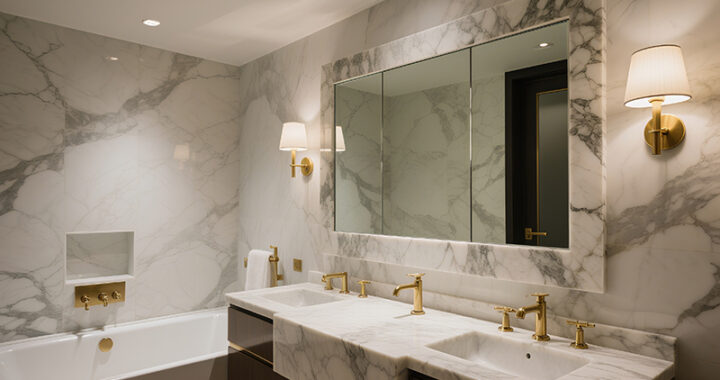 Best Luxury Bathroom Mirrors for a Stylish Touch
Best Luxury Bathroom Mirrors for a Stylish Touch 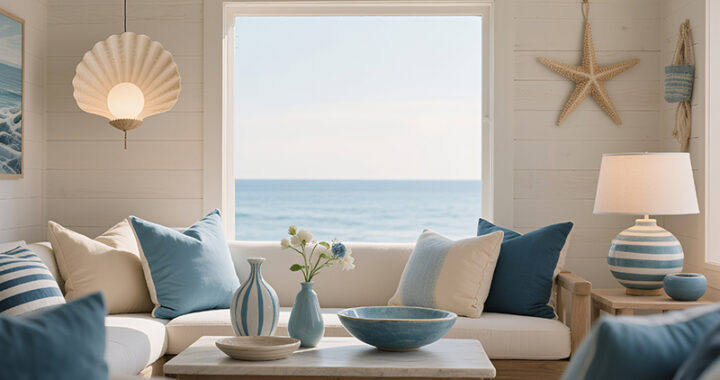 Luxury Coastal Home Decor Ideas: Elevate Your Beach House with Timeless Elegance
Luxury Coastal Home Decor Ideas: Elevate Your Beach House with Timeless Elegance 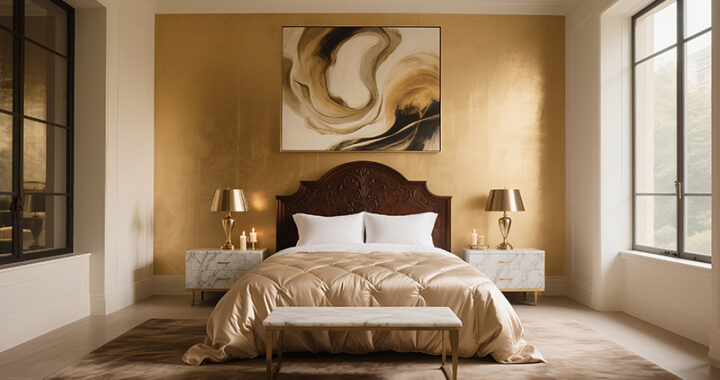 Home Decor Ideas to Make Your Home Feel Like a Luxury Hotel
Home Decor Ideas to Make Your Home Feel Like a Luxury Hotel 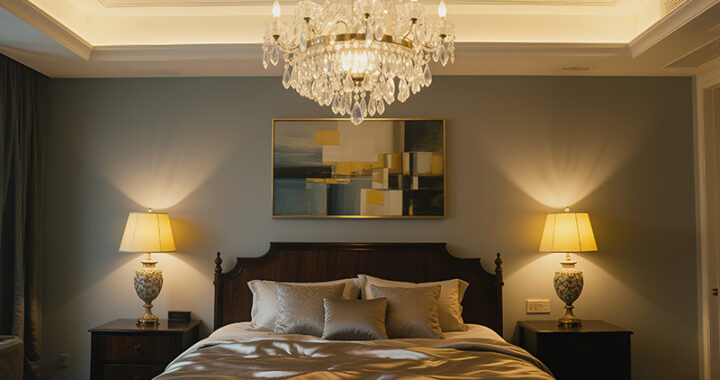 Best Luxury Accent Lighting for Every Room
Best Luxury Accent Lighting for Every Room 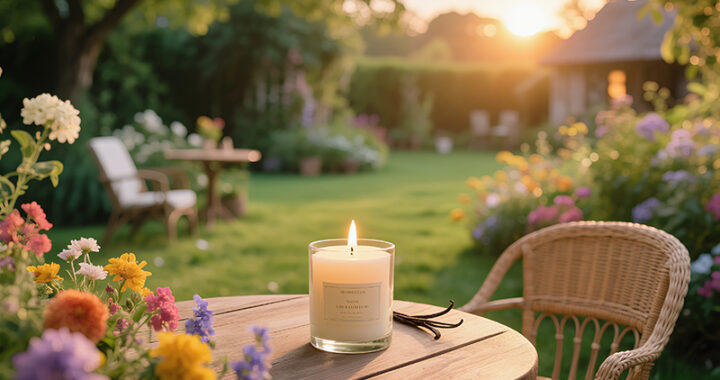 Best Luxury Candles for a Cozy and Elegant Home
Best Luxury Candles for a Cozy and Elegant Home 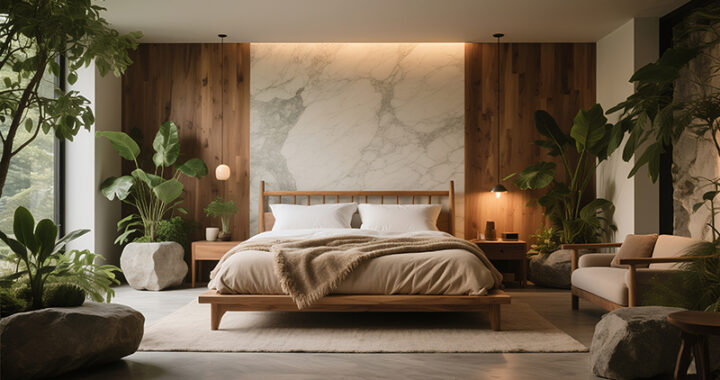 Best Luxury Bed Frames for a Stylish Bedroom
Best Luxury Bed Frames for a Stylish Bedroom